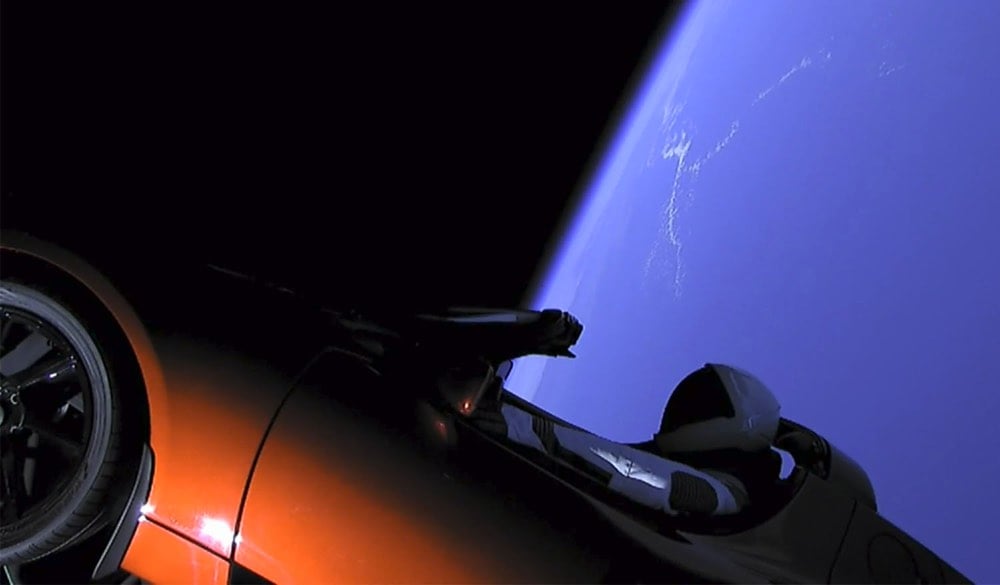The Falcon Heavy launch, space advertising for billionaires, and the beauty of science
I’ve slept on it and my mind & soul are still reeling from the SpaceX launch of Falcon Heavy yesterday. I can’t tell you why exactly, but when the two side boosters landed safely back on Earth at nearly the same instant, as in a beautifully choreographed ballet, I nearly burst into tears. Just watching the replay gets me all verklempt:
Of course, the boosters were supposed to land at the same time. They broke away from the main stage at the same time and were controlled by identical computer systems in their descent; it’s a simple matter of high school physics to solve for the time it takes two uniform objects to travel from point A to point B. But as Richard Feynman said about the beauty of a flower, knowing the science makes moments like this more wondrous.
And then right after that, the video showed what appears to be a human driving a car in Earth orbit to the strains of David Bowie’s Life on Mars. What an incredible, ridiculous, ludicrous thing:

There is ample prior art, but I suspect Elon Musk launching a Tesla Roadster into orbit will go down in history as the first notable advertisement in space, a marketing stunt for the ages. However, it seems problematic that billionaires can place billboards in orbit and then shoot them willy nilly into the asteroid belt without much in the way of oversight. As the Roadster recedes from Earth and our memory, will it become just another piece of trash carelessly tossed by humanity into a pristine wilderness, the first of many to come? Or as it ages, will it become an historic artifact, a orbiting testament to the achievement and naivety of early 21st century science, technology, and culture? It’s not difficult to imagine, 40 or 50 years from now, space tourists visiting the Roadster on its occasional flybys of Mars and Earth. I wonder what they’ll think of all this?
Update: The Roadster has been assigned an interplanetary ID by NASA: Tesla Roadster (AKA: Starman, 2018-017A). Using data from a Chilean telescope, astronomers have been able to figure out how fast the car is tumbling in space from the changes in brightness: 1 rotation every ~4.8 minutes (although there’s some disagreement in the comments that it might be twice that). At any rate (har har), here’s a time lapse video of the car taken with the 4.1-m SOAR telescope in Chile:
You can see the car blinking in our time-lapse from the 4.1-m SOAR telescope in Chile, taken in twilight on 2018-02-10. The car is already more than 1 million km away, tens of thousands of times fainter than can be seen with the unaided eye. pic.twitter.com/WPHTPjps57
— JJ Hermes (@jotajotahermes) February 11, 2018
Astrophotographer Rogelio Bernal Andreo also captured the Roadster moving across the sky in this video:





Stay Connected